Tibet Travel Guide
Do you dream of visiting Tibet but are overwhelmed by the amount of research, permits, and planning that seems to be involved? If you need information about visas, permits, maps, regional information, and more before you go, we have a comprehensive Tibet travel guide for you. Read below for all the information you need to know.
I want to go to Tibet. Wait… Where is it?
It is surprising how few people are able to locate Tibet in a map. What exactly is Tibet, and where is it? No, it is not an embarrassing question. This detailed travel guide page will give you the answers.
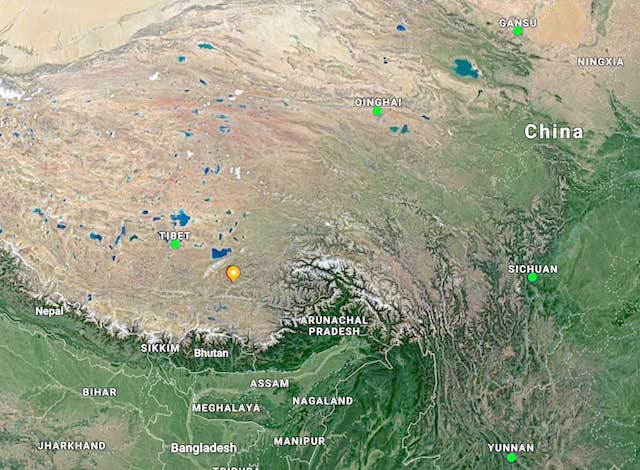
Tibet occupies a notable location, corresponding to the Tibetan Plateau. Its language has spread across the Himalayas and is spoken in Bhutan, India, Nepal and Pakistan. An immense majority of its cultural regions now belong to the People’s Republic of China, with the Tibet Autonomous Region (TAR) leading as well as ten Autonomous Prefectures located in Qinghai, Gansu, Sichuan and Yunnan. If you’re planning a trip to Tibet soon, be sure to check out our article on how best to visit!
Defining Tibet
As the Tibetan Plateau is home to countless ethnic groups, more than 100 languages, and more than 220 Tibetan dialects, coming up with a compact definition of Tibetan culture is difficult.
The name, ‘Tibet’, is rooted in ancient Chinese and Arabic words. It was used to describe an empire established by a powerful dynasty of monarchs whose sovereignty was expansive; it expanded into countries as far east as Pakistan and as far south as Nepal, and this bloodline remained in power for more than 1000 years. Our current understanding of Tibet often harkens back to the imperial period (7th-10th century AD); not the isolated place we often imagine but really a melting pot of different cultures. The language, writing, and religion that developed then are still vibrant today, connecting the people through a deep Buddhist culture.
The rulers of Yarlung Valley in Lhasa achieved remarkable success in increasing their control over the Tibetan Plateau – the largest and highest geographical feature on Earth. In the process, they traded and shared skills, absorbed other cultures, and borrowed ideas from powerful empires. To this day, ‘Tibet’ is recognised as the area conquered by these kings during their Golden Age. Unfortunately, religious persecution and internal conflicts brought an end to this great kingdom around the end of the 10th century. Despite this, Buddhism experienced a momentous revival, playing a large part in characterising ‘Tibetan Culture’. Get all the information you need to visit Tibet by reading its travel guide.
China’s Administrative Division
Under the democratic centralism system of the Chinese Communist Party, 22 provinces and five autonomous regions make up the People’s Republic of China (PRC). A Chinese province is composed of a prefecture, which is further divided into counties, townships, and villages.
The Tibetan areas of the PRC are:
- Gannan Autonomous Tibetan Prefecture in Gansu Province
- Haibei Autonomous Tibetan Prefecture in Qinghai Province
- Huangnan Autonomous Tibetan Prefecture in Qinghai Province
- Hainan Autonomous Tibetan Prefecture in Qinghai Province
- Golog Autonomous Tibetan Prefecture in Qinghai Province
- Yushu Tibetan Autonomous Prefecture in Qinghai Province
- Haixi Mongol and Tibetan Autonomous Prefecture in Qinghai Province
- Aba Tibetan and Qiang Autonomous Prefecture in Sichuan
- Garze Tibetan Autonomous Prefecture in Sichuan
- Deqen Tibetan Autonomous Prefecture in Yunnan
- Xizang Tibet Autonomous Region
U-Tsang, Kham And Amdo Travel Guide: The Three Main Cultural Regions
The Tibetan cultural area can be roughly divided into three subcultures: U-Tsang (Central Tibet), Amdo, and Kham. Each area has its own unique cultural flavour, distinctive dress, cuisine, and customs.
Where is Amdo?
In southwestern Gansu, Qinghai, and northern Sichuan, Amdo is known for its rolling plains, scholars, and its contribution to Tibet’s Buddhist revival. Look into the best Amdo tour packages.
Travel Destinations in Amdo
- Amnye Machen (trek)
- Nyenpo Yurtse (Trek)
- Labrang Monastery
- Qinghai Lake (Lake Kokonor) (Hot! Qinghai Lake Day Tour)
- Traditional Thangka Painting in Rebkong (Tour)
Central Tibet Travel Guide (The Tibet Autonomous Region)
A map of the world will identify the area known as Tibet, which is actually the Tibetan Autonomous Region (TAR), an integral province of The People’s Republic of China. This is in fact the largest area of traditional Tibetan culture, where the kings once held court at the iconic Potala Palace.
Its stunning landscapes with their towering peaks, awe-inspiring views and serene, sacred lakes are held in high regard. It is also known as U-Tsang or Central Tibet and covers two provinces – U and Tsang – plus that part of Zhangzhung (Ngari), once a powerful kingdom which was conquered by Tibetan King in the 7th century. Among its other features are numerous important monasteries, castles and monuments.
Travel Destinations in the Tibet Autonomous Regions
- Lhasa and Beyond: Potala Palace, Jokhang Temple, Ramoche Temple, Sera Monastery, Drepung Monastery, Drepung Monastery, Norbuling Palace, Drak Yerpa, Pabongkha, Yumbu Lagang, Samye Monastery, Trudrug Monastery, Namtso Lake, Yamdrok Lake Tashi Lhunpo Monastery, Pekor Choede Monastery, Shalu Monastery etc. Check Lhasa & Beyond Tours
- Everest Base Camp: Check Everest Base Camp Tours
- Ngari Region: Mt. Kailash, Lake Manasarovar, Guge-kingdom etc. Check Kailash Tours
Where is Kham?
In the TAR’s eastern extremity, southern Qinghai, the western half of Sichuan, and northern Yunnan are Kham cultural areas, which are characteristic of forestry, steep mountains, and distinctive dress.
“Travel Destinations in Kham”
- Dege’s Printing House
- Litang’s Old Town
- Yulum Lhatso
- Minyak Towers
How do I get to Tibet?
This Tibet travel guide will provide you with several options for transportation, depending on where you are travelling to. Qinghai is generally the most accessible region while reaching those in western Sichuan typically requires a lengthy road trip. To accommodate altitude sickness, which usually occurs above 4500 meters (14763 feet), it is recommended to opt for an overland route as it gives you more time to acclimatise. Finally, departures and arrivals are most commonly from/to cities at lower altitudes.
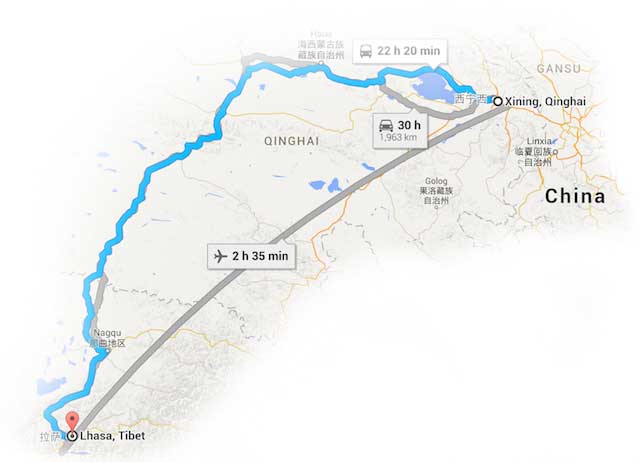
Central Tibet (Tibet Autonomous Region)
It is only possible to reach central Tibet by plane from Nepal or from points of departure within the PRC. Although the train ride is 21 hours, we recommend that you get acclimatised since it allows for better acclimatization. A new rail line was built in 2006 and boasts modern facilities, sleeping compartments, and dining cars. Xining, the capital of Qinghai Province, is the point of departure for the train trip. I would also recommend to do a short stay in Amdo by taking a day trip from Xining.
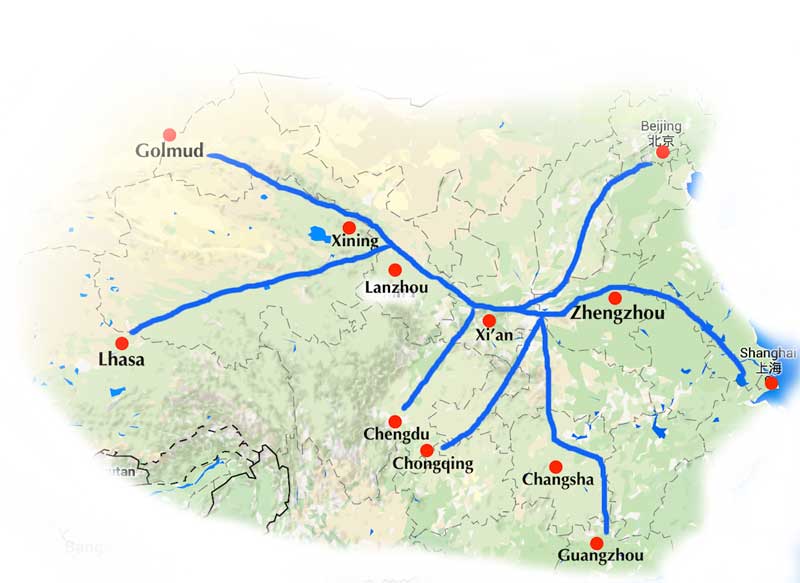
How Do I Get to Kham
It is easiest to reach Kham from the capitals of Sichuan Province (Chengdu) or Qinghai Province (Xining). Despite having several domestic airports, it is best to travel overland by bus or car to acclimate. There is no train service in this area yet.
How Do I Get to Amdo
It is perhaps most accessible to Amdo because the roads in Qinghai and Gansu are generally well maintained and the terrain is generally flat. Many people choose to think that it is a great option to plan a tour to Amdo, the capital of Qinghai Province. Xining is the gateway to most of historic Amdo, the capital of Qinghai Province. However, its southern regions are closer to Chengdu. However, information about Amdo treble guide here is important to know before you contacting and Amdo tour operator.
When should I go to Tibet?
Summer
The Tibetan Plateau is generally not best visited during the summer, contrary to popular belief. While summer is certainly beautiful, the same monsoon rains that sweep across the Indian subcontinent during the summer (the origin of which is the Himalayan mountain range) pour over much of the plateau in the months of June and July. The upside of all the rain is that the grasslands flowers are in full bloom. The temperatures, of course, are much warmer during the summer months. Check tours in Tibet.
Fall
Trekking is best done in late summer or early fall (especially from late July to late September) when the flowers are fading but the rain has mostly stopped.
Winter
During the coldest part of the year, winter on the plateau lasts from mid-October to early May. It even swallows up Spring in its midst. Winter can be bitterly cold in many places, but the skies are hauntingly blue and rivers are turquoise with glacial melt. Winter is the dry season, so you will not find very many snowy places until late winter or early spring because the sun is usually strong during the day.
What kind of Visa do I need?
As the areas discussed above are all officially part of the People’s Republic of China, regardless of which region you are interested in visiting, you will first need to obtain a valid Chinese Visa. The exception to this rule is that, if you are entering the Tibet Autonomous Region (TAR) from Nepal, you must instead obtain a Tibet Group Visa from the Chinese Consulate in Kathmandu. Visa cost and processing time will vary depending on country, but it usually takes around 3 working days. The exact permits you will need to procure will vary depending on where you decide to go. Below you can find a rough procedural outline, but please visit our Visit Tibet page for in depth information, or contact us directly to discuss your exact travel plans and determine what you will need to apply for.
Visa guide to Tibet Autonomous Region (TAR)
The PRCB prohibits backpacking, individual travel, and unguided travel in the TAR. To obtain a Tibet travel permit, you must go through a licensed local tour operator. If you do not obtain the required permits, you cannot board a train or fly.
To process Tibet travel permit, you are required to send following documentation to your local Tibet travel agency:
- If you enter Tibet from mainland China, You will need to send copies of your Chinese visa and passport:
- If you enter Tibet from Kathmandu, Nepal, you will need to send a copy of the passport.
What Visa?
There are only two ways to enter the Tibet autonomous region (TAR). Most importantly, you should know the different visas from Mainland China or from Nepal. Read the following Tibet travel guide to understand what visa you have to process.
You know what? China has declared a 15-day visa free entry for Franch, Spanish, Germany, Italian, Netherlands and Malaysian nationalities from Dec 1, 2023 t0 Nov 30, 2024!
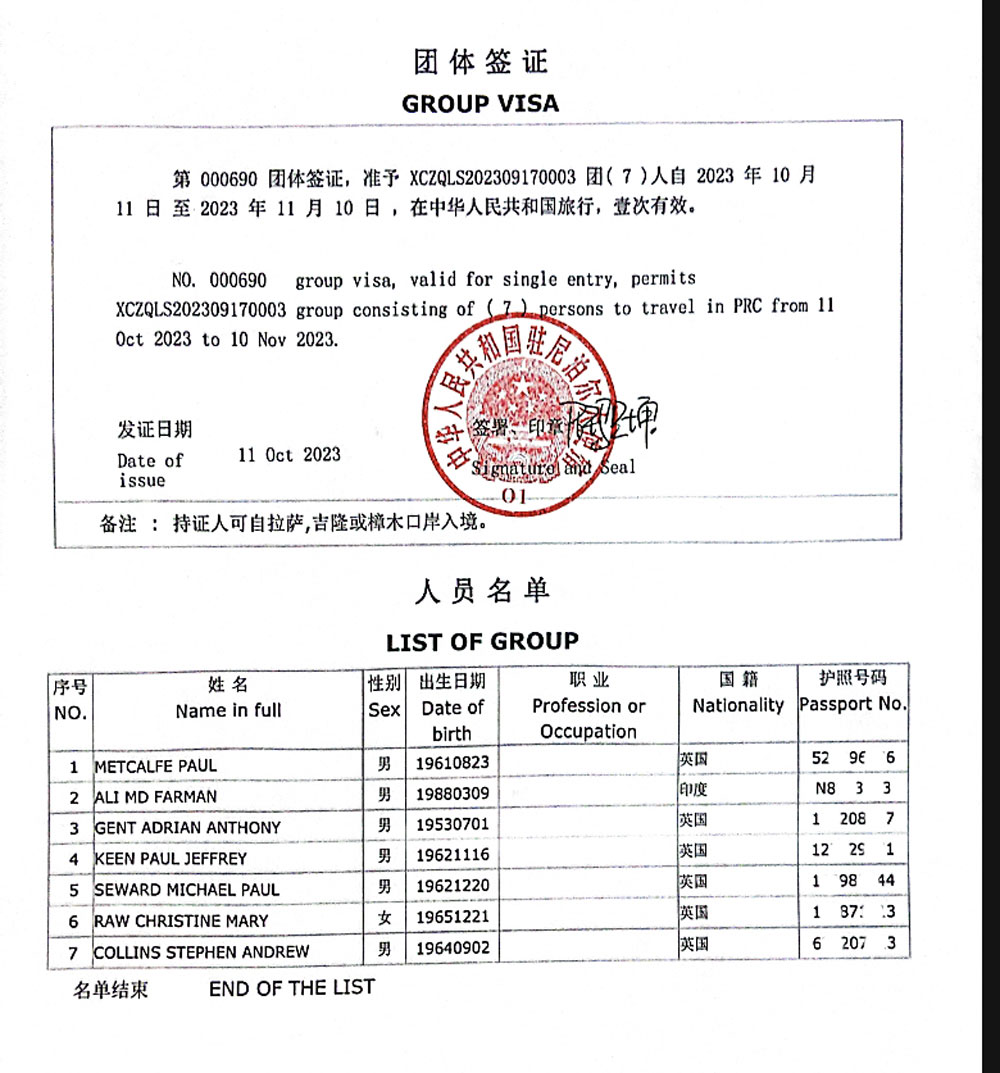 |
| Visa from Kathmadnu, Nepal |
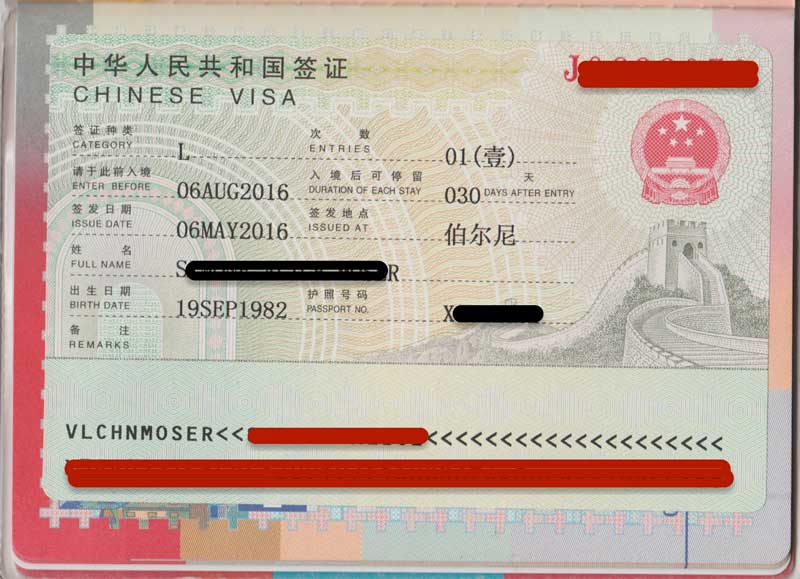 |
| Visa from mainland China |
Visa Guide from Mainland China:
This is the easiest way to take train or flight from any convenient cities from mainland China. To get to China first, you have to process Chinese Visa from the Chinese embassy to your country. Chinese visa is also processable in any countries if it isn’t available in your country. Travel agencies in Lhasa are not responsible in any matters of getting your visa. Once you get Chinese visa, A Tibetan travel agency process your permit by submitting your documents (copies of your passport and Chinese visa) to Tibet tourism bureau (TTB). This process usually takes two weeks.
Visa from Nepal:
You can take direct flight to Lhasa or booking a tour from Kyirung border to Lhasa. However, you are required to process Tibet Group Visa (some call it Tibet visa) from Chinese embassy to Kathmandu. Nepal is the one an only country where you will get Tibet Group visa for Tibet. You do not need Chinese visa from your country accept a visa for Nepal. To get group visa from Kathmandu, you have to book a tour with a licensed travel agency in Lhasa who is responsible to send you an invitation letter. You can not get group visa along with yourself but our partner travel agency in Kathmandu who will handle this procession successfully within 3 working days.
The partner travel agency will need your original passports along with the invitation letter to get the visa. At arrival by overland or by flight, tour guide will be at the border or airport to receive you with your travel permit, and help through all checkpoints.
Outward Tibet
Outward is also very important. Your Tibet travel permit already included your inward and outward departures information too. For example, your outward destination is to mainland China, you can not got to Nepal at end of the tour.
Kham and Amdo Tibet travel guide
Tibet Travel Permit are not needed for Tibetan cultural areas outside of the TAR, (most of Kham and Amdo tours). These areas can be visited with most regular, valid, Chinese Visa.
Certain areas in Kham and Amdo are subject to closures and for select areas. Visiting or overnight stays may require an Alien’s Travel Permit (ATP )or a Military Permit. Contact us directly to find out if the area you are interested in Amdo and Kham Tibet has special requirements.Check if it is your interested trip overland Kham and Amdo.
Note: To understand all about Kham and Amdo travel guide, Licensed Tour agencies in Amdo and Kham are unable to assist in issuing you a Tibet travel permit if you are employed as a diplomat, journalist, photographer, or government personnel in your country of origin. Persons to whom this restriction applies are only permitted to travel to Tibet with the approval and assistance of The Foreign Affairs Department.
Altitude Sickness
The average altitude of the Tibetan Plateau is over 4,500 meters. So chances are that no matter how good of health you are in, you may experience altitude sickness. Usual symptoms include headaches, dizziness, trouble sleeping, fatigue, and shortness of breathe, and dehydration. In rare and extreme cases altitude sickness can result in edema. Serious altitude sickness is almost always the result of ascending too quickly. A slow ascent and taking rest days to allow for acclimatization are simple steps that can help to make your trip safe and enjoyable. As you ascend in altitude, the air gets thinner and your body begins to overproduce red blood cells to compensate for the decrease in oxygen. Within 72 hours your body will adjust and you can continue to ascend.
Altitude sickness is usually not an issue for those travelling below 2500 meters (8000 feet); however, since the body reacts differently to different heights, even a minor elevation can cause a major change in one’s physical well-being. Pay attention to your body and don’t be afraid to take it slow if you start to feel unwell. On top of that, dehydration is common in the high altitude; hence, lots of water should be consumed as protection from the scorching sun. Furthermore, Tibetan Plateau’s conditions act as a shield against many diseases; thus, please ensure your immunizations are up-to-date. Fortunately, no extra shots are needed unless otherwise specified.
